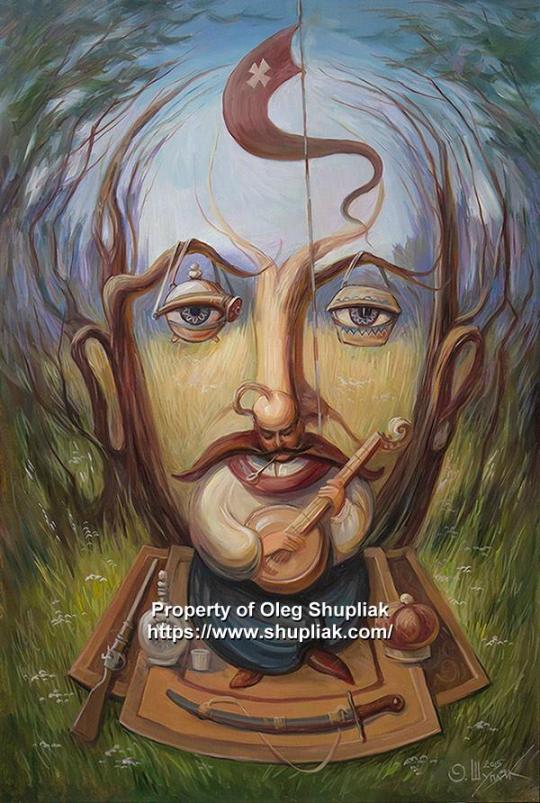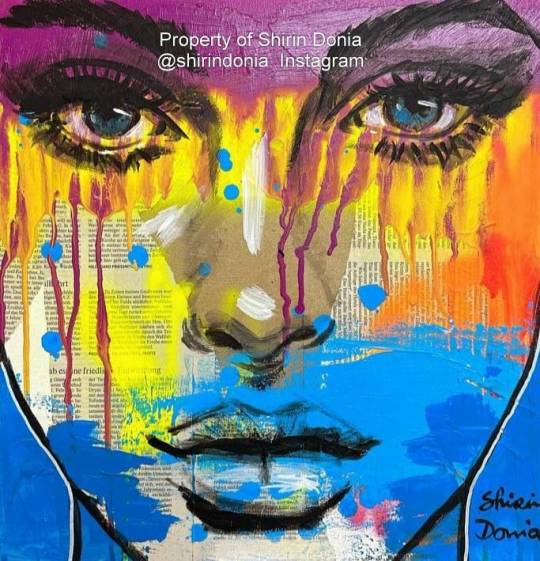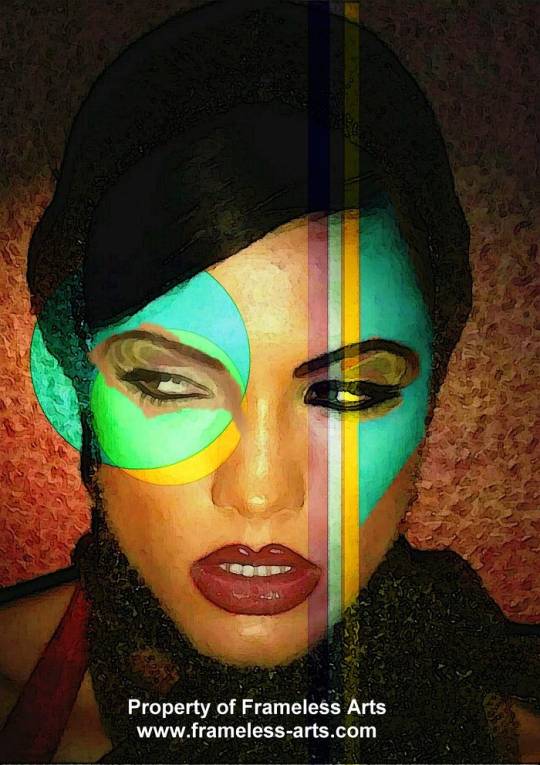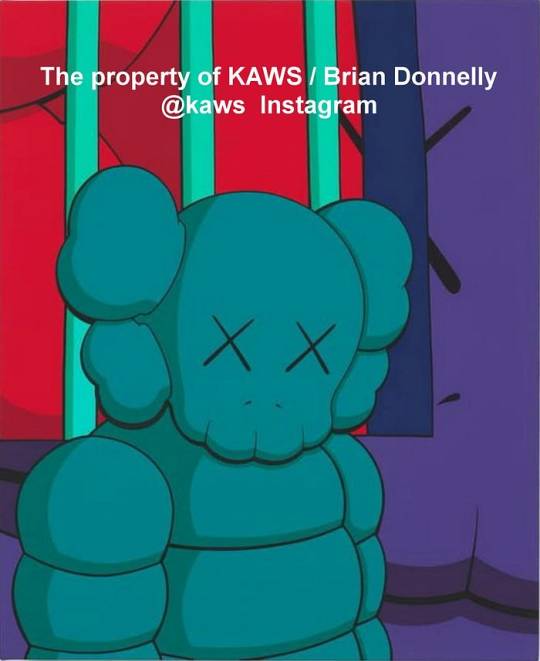Don't wanna be here? Send us removal request.
Text
Art as Alternative Investment (Part 3)
Investing in Contemporary Art: A Guide to Authenticity, Provenance, and Long-Term Value -- Insights from Shawn Lee-Hartmann, Octavio Ocampo, and Oleg Shupliak
In today’s fast-changing art market, contemporary artists are increasingly presented with both opportunities and challenges. The rise of digital technologies, online art sales, and the increasing demand for transparency around authentication and provenance have all transformed the way art is bought, sold, and valued. Artists who successfully navigate this new landscape, such as Octavio Ocampo, Oleg Shupliak, and Shawn Lee Hartmann, have set a high standard for their peers. By emphasizing authenticity, thorough documentation, and embracing technological advances, these artists have positioned themselves as models for others to follow.
For those who haven’t yet adopted similar practices, the strategies used by these leading figures offer valuable guidance. For artists who are already committed to such practices, their success underscores the importance of maintaining these standards. In either case, following the example of Ocampo, Shupliak, and Hartmann can significantly enhance an artist's market presence and ensure the long-term value of their work.

The Importance of Authenticity and Provenance
Certificate of Authenticity (COA)
A Certificate of Authenticity (COA) is more than just a piece of paper; it serves as a foundational document that verifies the legitimacy of a piece of art. For collectors, a COA offers peace of mind, confirming that the artwork is genuine and created by the artist it is attributed to.
Artists like Ocampo, Shupliak, and Hartmann have made COAs a standard part of their practice. These certificates provide key information such as the artist’s name, the title of the artwork, the medium used, and a detailed provenance of the piece. Their commitment to providing this documentation not only reassures collectors but also significantly enhances the market value of their work.
For artists who haven’t yet made COAs a part of their standard process, adopting this practice is an important step. Not only does it protect the integrity of the artwork, but it also adds to the credibility of the artist. In an increasingly competitive market, ensuring that every piece is accompanied by a robust COA can make a significant difference in how an artist’s work is perceived and valued.
Provenance Research: Documenting the Journey
Provenance, the documented history of an artwork’s ownership and exhibition history, is another key factor in determining an artwork’s value and authenticity. Collectors want to know where a piece has been, who has owned it, and where it has been displayed. A well-documented provenance adds significant value to an artwork, as it assures buyers that the piece is genuine and has a verifiable history.
Artists like Ocampo, Shupliak, and Hartmann excel in this area. They maintain meticulous records of their artworks’ journeys, from creation to exhibition to sale. This level of transparency not only adds credibility but also makes their work more desirable to collectors.
For artists who are just beginning their careers or have yet to focus on documenting provenance, now is the time to start. Even for those whose works have not yet been displayed in prominent galleries or collections, beginning to record ownership and exhibition history early in an artist's career will only serve to enhance their reputation in the long run.
The Role of Technology in Art Authentication
As the art market continues to embrace digital platforms, technology has become a crucial tool in verifying authenticity and protecting the integrity of artworks. Advanced techniques such as forensic analysis, digital watermarking, and pigment testing provide an extra layer of security, ensuring that an artwork is genuine and has not been tampered with.
Artists like Shawn Lee Hartmann, an early adopter of digital rights management, have been at the forefront of incorporating these technological advances into their practice. By using tools like digital watermarks and blockchain-based verification, Hartmann ensures that his works are not only authentic but also protected from unauthorized reproduction. Ocampo and Shupliak, too, have embraced technology as a means of ensuring the authenticity of their works, aligning with the demands of a modern, more tech-savvy art market.
For artists who have not yet explored the potential of technology in safeguarding their work, doing so can be a powerful step in increasing their market credibility. By embracing the latest advancements in art verification, artists can provide collectors with greater confidence in the authenticity of their pieces. For those who are already utilizing technology, continuing to stay updated on the latest developments will ensure that they remain competitive in a rapidly evolving market.

Auction House Connections: Prestige and Trust
Auction houses play a significant role in determining the value of artworks, and artists who establish strong relationships with prominent auction houses gain a competitive edge. Not only do these institutions bring greater visibility to an artist’s work, but they also offer a level of prestige and transparency that enhances the credibility of both the artist and their pieces.
Shawn Lee Hartmann, for example, has built strong ties with many top auction houses in the DACH region (Germany, Austria, Switzerland), where he has positioned himself as a trusted figure in the art investment market. His background in representing Invaluable.com, a leader in online auctions, has given him unique insights into how to navigate the auction world. This integration within prestigious institutions not only boosts the value of his works but also provides an added layer of security for collectors.
For artists who haven’t yet established relationships with auction houses, doing so can be a crucial step in gaining greater recognition. Working with reputable auction houses can significantly enhance the visibility and credibility of an artist’s work. For those already in collaboration with auction houses, maintaining and strengthening these ties will continue to support the long-term value of their art.
Exhibition History and Cultural Significance
An artwork’s exhibition history is a major factor in determining its cultural significance and market value. Collectors are drawn to pieces that have been featured in prominent exhibitions and galleries, as this exposure enhances both the credibility and desirability of the work.
Artists like Ocampo, Shupliak, and Hartmann have consistently showcased their work in international exhibitions, solidifying their reputation as leading contemporary artists. This level of visibility not only elevates the artist's standing but also adds to the investment potential of their pieces.
For emerging artists, actively seeking exhibition opportunities is crucial. Whether it’s participating in group shows, submitting work to galleries, or gaining recognition through art fairs, these experiences contribute to an artist’s professional trajectory. Even for those who have already established themselves, continuing to build a strong exhibition record will ensure their work remains relevant and valuable in the long term.
Setting a High Standard for Other Artists
The practices of Octavio Ocampo, Oleg Shupliak, and Shawn Lee Hartmann provide a clear roadmap for other artists looking to succeed in today’s competitive art market. Their focus on authenticity, meticulous documentation, and the integration of technology into their practices sets a high standard that all artists can aspire to.
For those artists who have not yet embraced these practices, following the example set by Ocampo, Shupliak, and Hartmann can significantly enhance their marketability. By prioritizing authenticity and provenance, and by leveraging technology to safeguard their works, artists can build stronger relationships with collectors and increase the long-term value of their art.
For artists who are already implementing similar strategies, the continued refinement of these practices is key to maintaining their competitive edge. As the art market evolves, staying informed about the latest trends in technology and authentication will ensure that their work remains relevant and valuable to collectors.

The Future of Art Investment: Opportunities for Artists
The art market is evolving rapidly, with digital platforms, technological innovation, and a growing demand for transparency changing the way art is bought, sold, and valued. For artists who are willing to adapt and embrace these changes, there are significant opportunities ahead.
By following the example of leading artists like Ocampo, Shupliak, and Hartmann, artists can position themselves for success in this new landscape. Whether it’s adopting digital authentication methods, building strong relationships with auction houses, or enhancing their provenance documentation, artists who prioritize these practices will not only enhance the value of their work but also secure their place in the future of the art market.
Conclusion: A Blueprint for Artistic and Financial Success
The practices of Octavio Ocampo, Oleg Shupliak, and Shawn Lee Hartmann demonstrate the importance of authenticity, provenance, and technological innovation in today’s art world. By embracing these elements, artists can significantly enhance both the market value and cultural significance of their work. For those who have yet to adopt these practices, doing so will open up new opportunities for growth and success. For those already on this path, continuing to refine these methods will ensure long-term relevance and value in an ever-changing market.
In an art world that increasingly values transparency, credibility, and innovation, the examples set by these three artists offer a powerful blueprint for artistic and financial success.
0 notes
Text
Art as Alternative Investment (Part 2)
Strategic Art Investment in the Digital Age: Insights from KAWS, Shawn Lee Hartmann, Asun Naranjo, and Shirin Donia
The Evolving Art Market: A Strategic Perspective
The contemporary art market has grown into a sophisticated blend of creativity, strategy, and digital transformation. As investors navigate this multifaceted landscape, the ability to discern the factors driving an artwork’s value is essential. Artists like KAWS, Asun Naranjo, Shirin Donia, and Shawn Lee Hartmann embody distinct aspects of the market, each offering unique opportunities for collectors with an eye on both art and investment.

Reputation and Market Dynamics
An artist’s reputation is foundational to their market value. KAWS, with his fusion of street art and fine art, has garnered a wide-ranging audience that spans both dedicated art collectors and pop culture enthusiasts. This broad appeal has cemented his position in the global art market.
Asun Naranjo’s work is characterized by vibrant geometric abstractions that delve into cultural identity and social themes. Her pieces attract collectors who appreciate both visual and intellectual depth. Shirin Donia, meanwhile, engages with themes of globalization and identity, using her abstract compositions to explore complex urban landscapes.

Artistic Innovation and Quality
The innovation and quality inherent in an artist’s work are pivotal to its market value. KAWS has successfully merged commercial and fine art, creating works that are both accessible and high in demand. His collaborations with major brands and participation in significant exhibitions further bolster his market presence.
Asun Naranjo’s ability to capture cultural narratives through geometric abstraction highlights her innovative approach within this genre. Her work appeals to those who seek art that is both thought-provoking and visually engaging. Shirin Donia, on the other hand, offers collectors a critical perspective on contemporary issues, blending beauty with intellectual engagement in her large-scale abstract pieces.
Shawn Lee Hartmann’s abstract expressionism, with its dynamic forms and intricate textures, is particularly notable for its ability to evoke strong emotional responses. His strategic release of artworks through selective channels ensures that each piece maintains its exclusivity, quietly reinforcing its market value.
The Role of Condition and Provenance
Condition and provenance are critical in determining an artwork’s market value. A well-preserved piece with a documented history commands greater assurance of authenticity, which in turn enhances its value.
KAWS’s works are recognized for their impeccable condition and thoroughly documented provenance, contributing to their high market desirability. Asun Naranjo’s inclusion in prestigious collections adds to the value of her work, attracting collectors who appreciate both the art and its association with esteemed institutions. Shirin Donia’s documented exhibition history and critical recognition similarly enhance the value and marketability of her art.

Navigating Art Market Trends
Art market trends are shaped by economic conditions, shifting collector preferences, and broader cultural movements. Artists like KAWS have adeptly aligned themselves with these trends, making their work highly sought after by a diverse range of collectors.
Asun Naranjo’s exploration of cultural and social themes through her abstract works resonates with collectors who value art that reflects broader societal issues. Shirin Donia’s engagement with themes of identity and globalization offers a compelling critique of contemporary society, attracting those who seek intellectually stimulating art.

Strategic Insights for Art Investors
The contemporary art market is continually evolving, with artists like KAWS, Asun Naranjo, Shirin Donia, and Shawn Lee Hartmann offering distinct insights that can inform investment strategies. KAWS’s widespread appeal, Naranjo’s cultural narratives, and Donia’s engagement with global themes each occupy unique niches in the art market.
However, there is an understated allure in the approach of artists like Shawn Lee Hartmann, whose careful release of works ensures they remain exclusive and highly coveted. For collectors attuned to these subtleties, Shawn Lee Hartmann’s art presents an opportunity that is both emotionally resonant and financially rewarding.
Conclusion: Insights from Research on Contemporary Art Investment
In evaluating contemporary art, our research highlights how a variety of factors — from an artist’s reputation and innovation to market trends and provenance — play crucial roles in determining the value of their work. Artists like KAWS, Asun Naranjo, and Shirin Donia each represent different facets of the art market, providing diverse opportunities for collectors and investors.
Through interviews and analysis, we found that artists who employ strategic approaches, particularly those involving the careful management of their work’s release and distribution, can create a unique niche in the market. For example, Shawn Lee Hartmann’s method of selectively showcasing his work has drawn attention for its impact on exclusivity and market value. This insight is based on a thorough examination of his practices rather than promotional intent, offering a perspective that may interest those following the evolving trends in art investment.
This investigation underscores the importance of understanding both the overt and subtle strategies employed by artists in today’s art market. By staying informed and recognizing these strategies, investors and collectors can make more informed decisions in the dynamic landscape of contemporary art.
0 notes
Text
2 notes
·
View notes